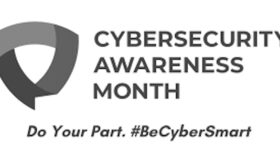Back to School Tips for Black Students
 Fall is creeping up on students all over the nation. Fall means returning to the campus or classroom. In 2015, the number of black students entering college or returning for another year is rising again. Black college enrollment is gradually catching up with whites. According to the U.S. Labor Department’s Bureau of Labor Statistics (BLS) 70.9 percent of black graduating seniors enrolled in college in October 2014 compared to 67.3 percent of whites students. 2014 marked the first time ever that African-Americans enrolled in college at a higher rate than whites.
Fall is creeping up on students all over the nation. Fall means returning to the campus or classroom. In 2015, the number of black students entering college or returning for another year is rising again. Black college enrollment is gradually catching up with whites. According to the U.S. Labor Department’s Bureau of Labor Statistics (BLS) 70.9 percent of black graduating seniors enrolled in college in October 2014 compared to 67.3 percent of whites students. 2014 marked the first time ever that African-Americans enrolled in college at a higher rate than whites.
But there is still a problem. Young black men are not enrolling in college at the same rate as black women. According to Clutchmagonline.com black women are enrolling in college more than any other group. But don’t get it twisted; black men are attending college. Another myth we need address while we’re at it. It is not true that there are more black men in prison than in college.
But college requires many things in addition to the desire to learn and better one’s self. It requires money. A college education is shamefully expensive. But what is truly heart breaking is the millions of dollars in scholarships and grants for minority students that are unclaimed every year. There is money available for black students. The AACR published this report revealing the scholarships available to minority students.
But college has other hidden expenses that students and parents need to realize. These include:
- On campus parking
- Course materials, text books, lab equipment, technology and assorted supplies.
- Taking longer to graduate, additional semesters and summer school.
- Student social activities.
- Clubs, fraternities and sorrorities fees.
- Travel expenses for family visits.
- Sports activities.
- Dorm expenses, laundry, bedding, toiletries, etc.
- Dining hall and meal plans, food.
All these expenses add up year after year and they are not normally covered by tuition. Some college tuition include meal plans but not all. Some will cover lab equipment and supplies. But you need to be aware of these costs and calculate them into your overall education budget. You can find ways to beat these costs here.
But before you even get a chance to pay for all those things and tuition you have to get into college. Many under-priviledged students find the cost of testing and admissins fees to be a major roadblack to geting into school. These fees can add up to hundreds of dollars before a student even gets admitted to college. Thankfully there are ways to beat those fees as well. Some states offer the ACT or the SAT free of charge. Some states and universities don’t require either for admittance into school. Some students may qualify for fee waivers allowing them to take those tests and possibly qualify for college application fee waivers as well. To check your qualifications for college application fee waivers the National Association of College Admission Counseling offers this form. Here are more details on the ACT waiver requirements and the SAT has some info here.
You still have to buy the books. College text books are notoriously expensive. Betwen 2002 and 2013 the price of a text book rose 82 percent. Why?
You can bring down the price of text books. “Occupy the Book Store‘ is a Chrome browser extension that allows you to shop for the same books you find at your college book store at online stores where you may find them cheaper. Other websites that help fight the high cost of textbooks include;
These are just a few websites but you can find many more by doing a simple web search.
Another concern that could be costly is the loss of personal information at school. You have no doubt heard of a data breach. Colleges and universities are not immune to this. As a student you need to protect your personal information at all times because you are a prime target for hackers. Schools can hold enormous amounts of data about students including their social security numbers, financial information of them and their parents, background information, medical data, and God knows what else. Parents and students need to understand why student data is such a prized target of data gatherers.
So how does the student protect their pers0nal information at school? Here are a few tips.
- Protect your technology. Never leave your laptop or phone unlocked and unattended. College campuses are often wide open and thieves know it. Whether you’re in the dorm or the library its easy for a thief to grab it and be gone. Don’t advertise the fact you are carrying a laptop. Laptop sleeves or carriers are clues and a target for thieves.
- Install a tracking app that will help you track down your device in case its lost or stolen. Encrypt your files. This way even if someone gets access to your computer they won’t get your information.
- Students are prime targets of malware and phishing attacks on their mobile devices. Students can protect themselves by making sure they are using different passwords on different accounts. One password fits all means a hacker gets it all if he can break or hack your password. And use a strong password or consider two factor authentication. If you have trouble keeping all those passwords in your head then use a password manager.
- Don’t share your password with your dorm or classmates.
- Be extremely careful with links and attachments in your email and text messages. Make sure to use a good anti-virus/anti-malware. You can find the best free anti-virus here.
- Install apps only from reputable app stores. Make sure to scan files with an anti-malware product before installing. Remember, campuses are rich environments for computer viruses.
- Many campuses offer free Wi-Fi. But who else is on that Wi-Fi? Hackers can monitor and collect information from free Wi-Fi and they do. So be extra careful when using the school or any free public Wi-Fi. Make use of VPN software so that your web use is encrypted and keep hackers from electronically eavesdropping on you.
- When using a campus or library computer;
- Don’t log into accounts, especially banks or accounts that store financial information.
- Don’t shop online because someone might get not only your login credentials but your credit card number.
- If you do have to use a public computer make sure to change your user name and password for whatever sites you log into once you get back to your own computer.
- Browse in Privacy Mode if you can’t erase your browser history and all cookies.
Students can be careless. They may feel that their information is not as vaulable as that of more established adults. Students don’t see the value of their information and this leaves them vulnerable because they don’t take information security seriously. But in reality it doesn’t matter how young you are, data and identity are valuable to cybercriminals. Remember AACR Internet Rule #5 “The currency and commodity of the digital age is called information.”
For a young man or woman just starting out in life correcting the problems caused by loss of identity is a painful uneccessary experience. Protect your data!
It’s back to school time and students face many challenges to getting an education. Parents and students working together can make it to graduation day. Good Luck!
Now you know.






